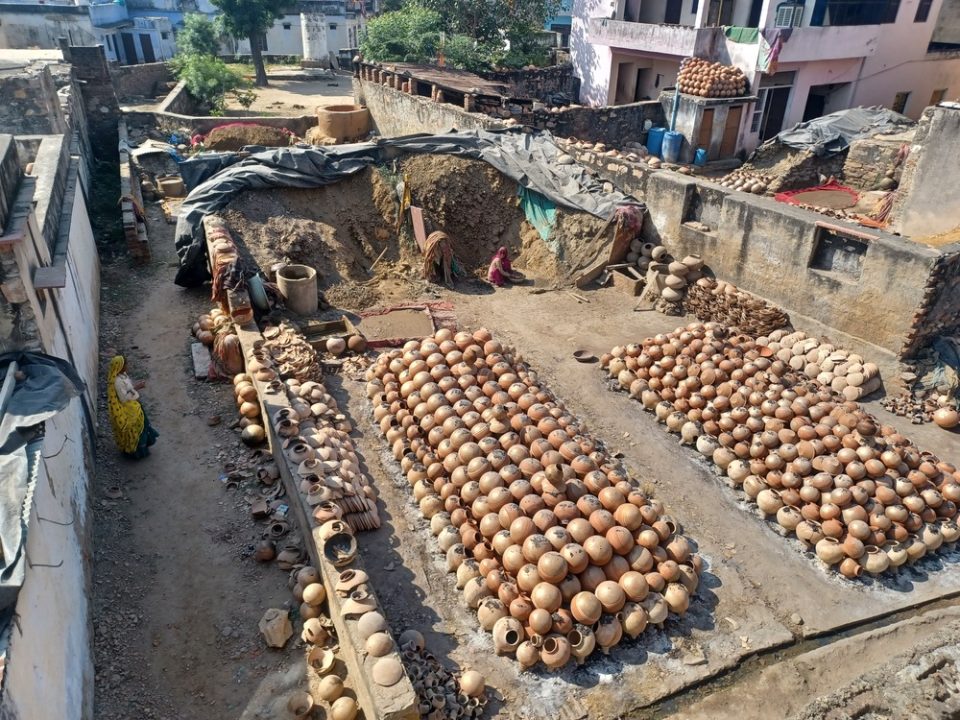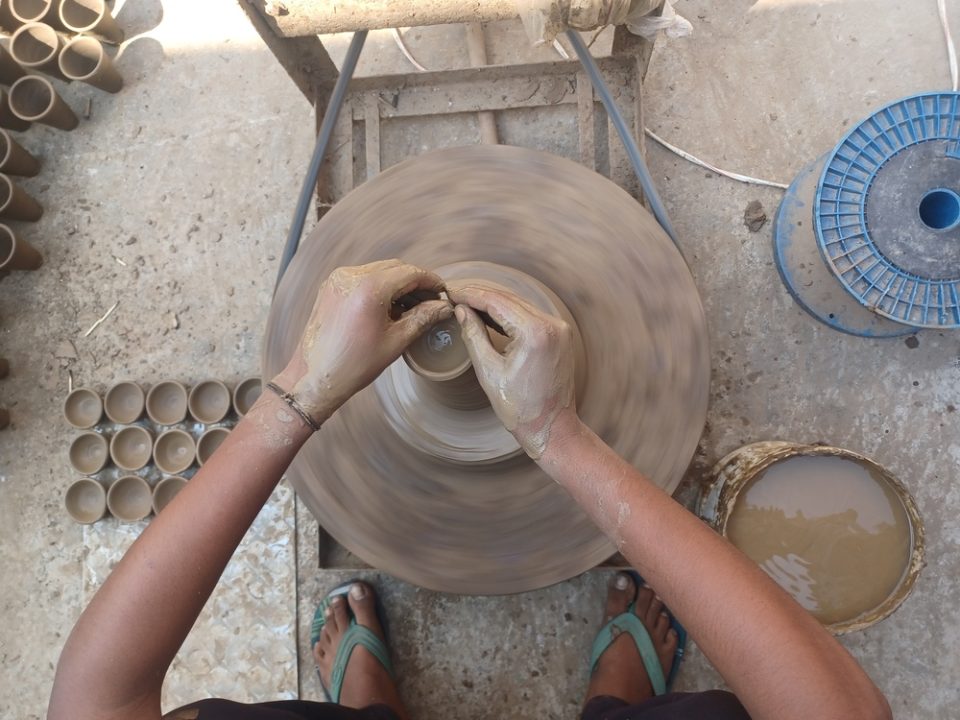Terracotta Art of Bihar – When the Earth Gets Its Colours and Its Soul
Terracotta comes from a Latin word that translates into baked earth. This art combines crafting a variety of pots, figurines, and utensils by drying, heating, and colouring the terracotta clay. It gets its colour depending on the process used to craft it. While the clay is heating, allowing the smoke to pass through the kiln’s vents provides us with an orange coloured figure. On the other hand, closed vents are used to obtain the grey or black colour.
The temperature range varies between 800 to 1000 degree celsius. Artists obtain the terracotta sand from the beds of ponds, rivers, and waterfalls in certain areas. The final pieces are coloured or left as it is according to the taste of the buyer. For someone with an eye for shiny, flashing decoratives, the pieces are painted with distinct colours to provide an additional touch of attractiveness. Otherwise, they are left with their original colours.

The history of terracotta takes us back to 8000 BC when the homo sapiens were just stepping in the bronze age from the stone age. Even during an undeveloped period of the bronze age, beautiful sculptures found during the digging of ancient civilization beautifully conveys the fact that humans always had a flair of creativity in them right from the stone age. They not only created the tools that were direly useful to them but at the same time, they invested some moments in creating artifacts that they could connect to or admire during a harsh period of survival.
Indus Valley civilization like Birhana, Mehrgarh, Mohenjodaro is some fine examples of escalated creativity in humans regarding artworks. Even though the Chinese Terracotta Army is one of the first things that pops up in the mind when we think about terracotta sculptures, but the surveys and discoveries suggest that this art was mastered in the Indian Subcontinent prior to any other civilization in the world.
In Bihar, the art of Terracotta was commenced during the reign of Mauryan Emperors around 200-300 BC. Since then, Bihar has been the flagship state of India when it comes to procuring high-quality, and marvellous terracotta creation. Terracotta horses crafted in Darbhanga have worldwide popularity due to their rainbow colours. Apart from houses, elephants, lamps, and flower pots that are normally seen on the rooftops of traditional-themed hotels and eat-outs are quite prevalent as well.
Well, all things aside, doesn’t terracotta crafting is a beauty in itself? Just a handful of clay, a wheel, and a heating object, and a little magic from artisan’s fingers, and you obtain an item that is never enough to behold. Witnessing these extraordinary pieces of small wonders coming out of the hands of uneducated and poor craftsmen directly touches the emotional sides of our souls.
Image Credits: Google Images




